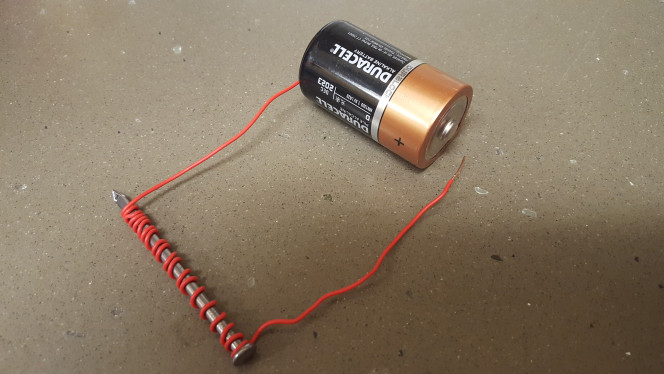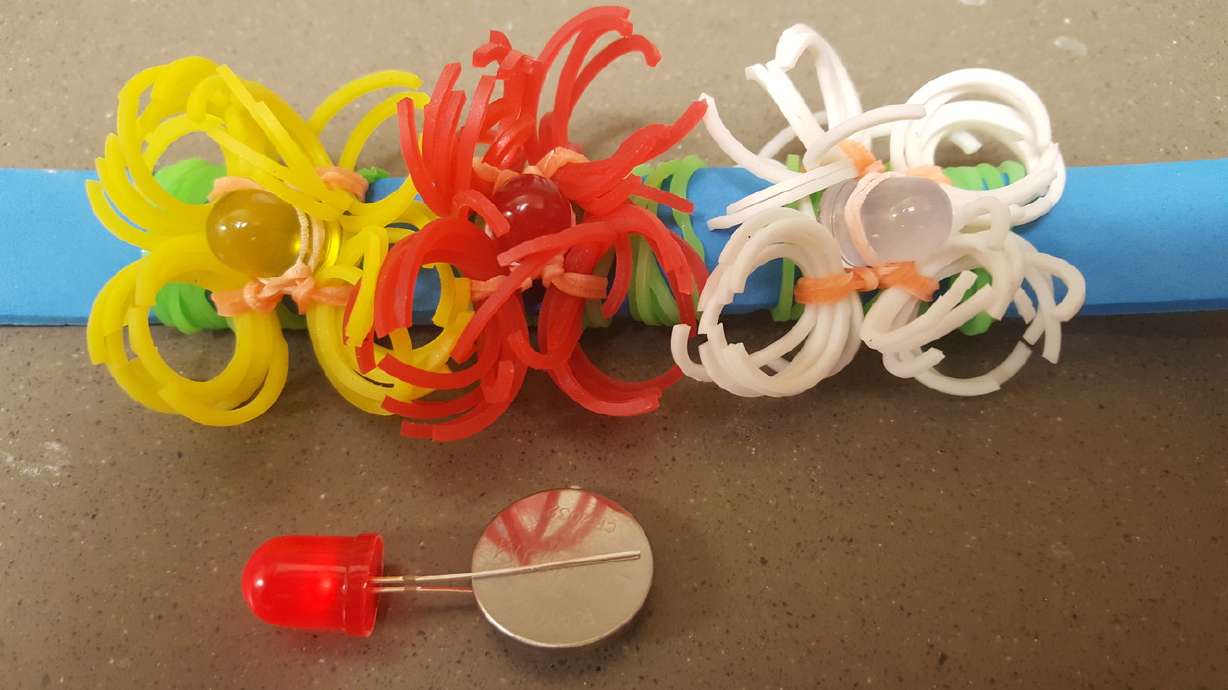Estimated read time: 6-7 minutes
This archived news story is available only for your personal, non-commercial use. Information in the story may be outdated or superseded by additional information. Reading or replaying the story in its archived form does not constitute a republication of the story.
SALT LAKE CITY — Have you been hearing the term 'maker' a lot lately?
This recent maker movement is an extension of do it yourself culture and incorporates many of those elements, except with a larger focus on technology. An example of DIY would be knitting a sweater, while a maker would be adding LED lights to your knitted sweater.
Mindy Whipple and Carrie Rogers-Whitehead, librarians at Salt Lake County Library, recently hosted a hackathon event with many maker activities. However, you don't need to go to a hackathon, or spend a lot of money, to bring your own maker movement home.
Anyone with the drive and creativity can be a maker. Below are some ideas to help you do that. LED lights, batteries and other maker supplies can be purchased from stores like Home Depot or websites including SparkFun and Amazon.
1. Create your own electromagnet
You will need: insulated copper wire, battery, iron nail, paper clips (optional)
Wrap the wire tightly around the iron nail. Then attach one end of the wrapped wire to the positive terminal of the battery, and another end to the negative terminal. At this point your electromagnet should be working. Try to pick up one of the paperclips with the nail.
Ask: What happens when you add coils around the nail? What happens when you increase the current flowing through the wire?

Photo: Mindy Whipple/Salt Lake County Library Services
2. Create a circuit with LEDs
You will need: battery (a 9 volt battery with connecting wires works great, although other batteries work well), LEDs (a.k.a. light emitting diodes), fruit or other food, alligator clips (optional)
Test out how a circuit works when connected with an LED light. The light will illuminate when the circuit completes. Fruit or food can act as a weak cell for the battery to work. The LED has a positive and negative terminal just like a battery — make sure that each is connected to the corresponding end of where the batteries terminals connect.
Ask: What happens if you add an extra piece of food to your circuit? Does some types of food illuminate the LED more than others?

Photo: Mindy Whipple/Salt Lake County Library Services
3. Make light-up jewelry
You will need: LED light, coin battery, jewelry supplies
Using the same circuitry concepts as you did in creating your own LED circuit, make your own piece of light-up jewelry. When making your jewelry, be sure that the positive and negative terminals of the LED light touch the positive and negative terminals of the coin battery. Glue, tape, or solder one terminal of the LED to its corresponding side on the battery. You will want to leave one terminal not touching because if they are both touching the power in the battery will quickly expire. Be creative and add craft details to your circuit.
Ask: There are numerous sizes of LED lights and types of batteries. What happens when you use a different size?

Photo: Mindy Whipple/Salt Lake County Library Services
4. Build your own 'Operation' type experiment
You will need: battery pack with AA batteries, two alligator clips, buzzer, tweezers, aluminum foil, electrical tape, box (a shoebox works great), scissors
Optional tools/supplies: an image to put on top of the foil layer, wire strippers, LED (to light up when the buzzer goes off), things to pick up in the game
Draw or paste a picture on your box, then cut out holes in the box. This is where you will insert the tweezers to pick up the objects in the game.
Tape foil on the underside of where your picture is. Make sure to remove the foil underneath any holes in the box so the bottom of the box can be seen. In the picture you can see that we kept the battery and the buzzer separate, but they could also be included inside the box. If you are keeping the all the parts together, tape the battery pack on the same side as the foil.
Then you will add power. Connect one alligator clip to the positive end of the battery pack and attach the tweezers to that end. Tape the negative end of the battery to the foil. Then make sure the clip of the alligator clip is touching the foil as well. Like the earlier maker experiments, you are creating a circuit with the positive and negative terminals.
In the experiment we did, we attached the buzzer to the battery, but the buzzer could also be included in the box. Make sure the negative wire of the buzzer is attached to the negative wire of the battery, and the positive wire of the buzzer is attached to the positive wire of the battery. They can be attached by electrical tape, or by stripping parts of the ends of the wires to expose the copper in them, and then wrapping the copper together.
Once you have all your terminals connected, your experiment should work. Touch the tweezers attached to one alligator clip to the foil in the box. Do you hear it buzz?

Photo: Mindy Whipple/Salt Lake County Library Services
5. Make your own Rube Goldberg machine
Rube Goldberg machines are named after a famous cartoonist who is best known for his series of cartoons which would create elaborate chain reactions. You can create your own Rube Goldberg machine out of common household items.
First decide on your goal: what do you want your machine to do? Once you decide your goal, assemble your materials. Look around your home for things like motors, blocks, fans, toys that you can use to create your machine. Next, experiment! See what happens when you flip a switch, or knock down a block. Continue adjusting your machine until you reach your goals.
This is a great family activity which teaches the scientific method in addition to more about simple machines.

Photo: Medea_Material/Flikr
To find out more about some of the maker activities at the Salt Lake County Library, look for events or call customer service at 801-943-4636. To learn more about making and Maker Spaces, contact Make Salt Lake or Salt Lake City Maker Faire. Sites like Make Magazine and Boing Boing also offer more maker activities and ideas.
Carrie Rogers-Whitehead is a senior librarian with Salt Lake County Library. She can be reached at rogers-whitehead@hotmail.com









